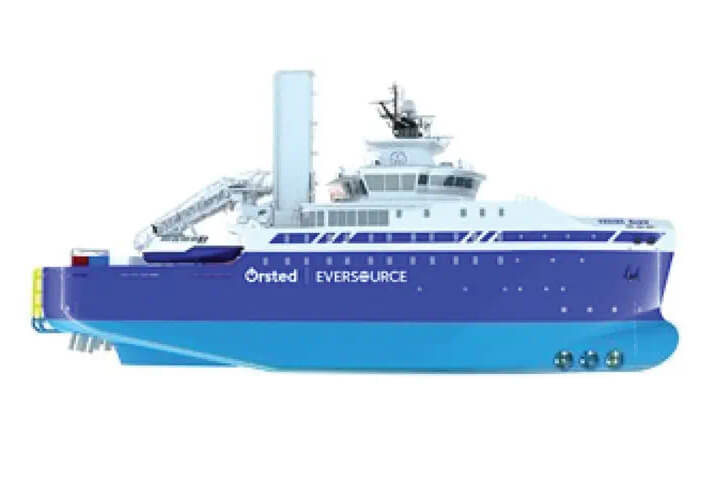Construction Begins on First U.S. Jones Act Wind Farm SOV

With construction getting underway on the first large offshore commercial wind farms in the United States, it is also starting to show benefits for the related industries that are expected to benefit from the new industry. Edison Chouest Offshore announce that shipbuilding of what is being termed “the first Jones Act-qualified wind farm service operations vessel (SOV) built in the United States” has commenced.
Due for delivery in 2024, the vessel named ECO Edison is being built at Edison’s in-house shipyards located in Louisiana, Mississippi, and Florida, with components for the vessel being manufactured in 12 states. Measuring over 260 feet long and capable of housing 60 crew members, the SOV will be utilized during the operation and maintenance of the three wind farm projects, South Fork Wind, Revolution Wind, and Sunrise Wind, being developed as joint ventures by Ørsted and Eversource.
The companies plan to operate the vessel from Port Jefferson, New York. It will serve as an at sea base of operations to accommodate and transfer technicians, tools, and parts safely to and from the individual wind turbine generators.
“This new vessel will be the first of its kind in the United States and play a crucial role in the growth of America’s offshore wind industry,” said David Hardy, Chief Executive Officer of Ørsted Offshore North America.

According to the companies, the vessel is designed to deliver high efficiency, low power consumption, minimum GHG emissions, maximum workability, and the highest levels of comfort. The vessel is also being constructed to incorporate future zero-carbon emission technology to assist in reaching carbon-neutral goals.
With work beginning on the vessel, Edison Chouest also announced some of the key suppliers and features of the vessel. Caterpillar Marine, GE Power Conversion, and Voith Schneider were selected for the power and propulsion systems for the ECO Edison. The vessel will be powered by four Caterpillar 3512E EPA Tier 4 generator sets (gensets), each rated for 1700 ekW. The gensets are configured for variable speed operation, allowing for the highest levels of efficiency and minimized exhaust emissions. The GE Power Conversion electrical system can operate with gensets or stored energy.
The latest generation of Voith Schneider Propellers (VSPs), featuring integrated permanent magnet motors, will be utilized for propulsion. These propellers have a rapid thrust and steering response, with minimal noise and vibration. The thrusters also feature roll reduction and sleep mode, maximizing station keeping, active motion compensated gangway workability, and comfort. The vessel will also be equipped with extensive remote monitoring and support capability provided by Marine Technologies.
“Today, the development of a new, clean energy future for the United States takes another important step forward as construction begins on the nation’s first Jones Act-qualified service and operations vessel,” said Joe Nolan, Chief Executive Officer and President of Eversource Energy. “Construction of this vessel will mean hundreds of new jobs for American workers as we continue to bring the benefits of offshore wind to communities around the country.”
Construction approval was recently granted for the first of the projects, South Fork Wind, which will be located off the east end of Long Island and south of Rhode Island. On shore work for the wind farm recently got underway and it is due for completion by the end of 2023.
To support its wind farms, Ørsted and Eversource also announced in January that they would charter five newly built crew transfer vessels. Senesco Marine located at Quonset Point in North Kingstown, Rhode Island will build three of the vessels while Blount Boats & Shipyard, of Warren, Rhode Island will build two of the CTV vessels.
In the United States, Ørsted currently operates the Block Island Wind Farm, America’s first offshore wind farm, and constructed the two-turbine Coastal Virginia Offshore Wind pilot project, the first turbines to be installed in federal waters. Ørsted has approximately 5,000 megawatts of offshore wind energy in development in five states and across seven projects.
